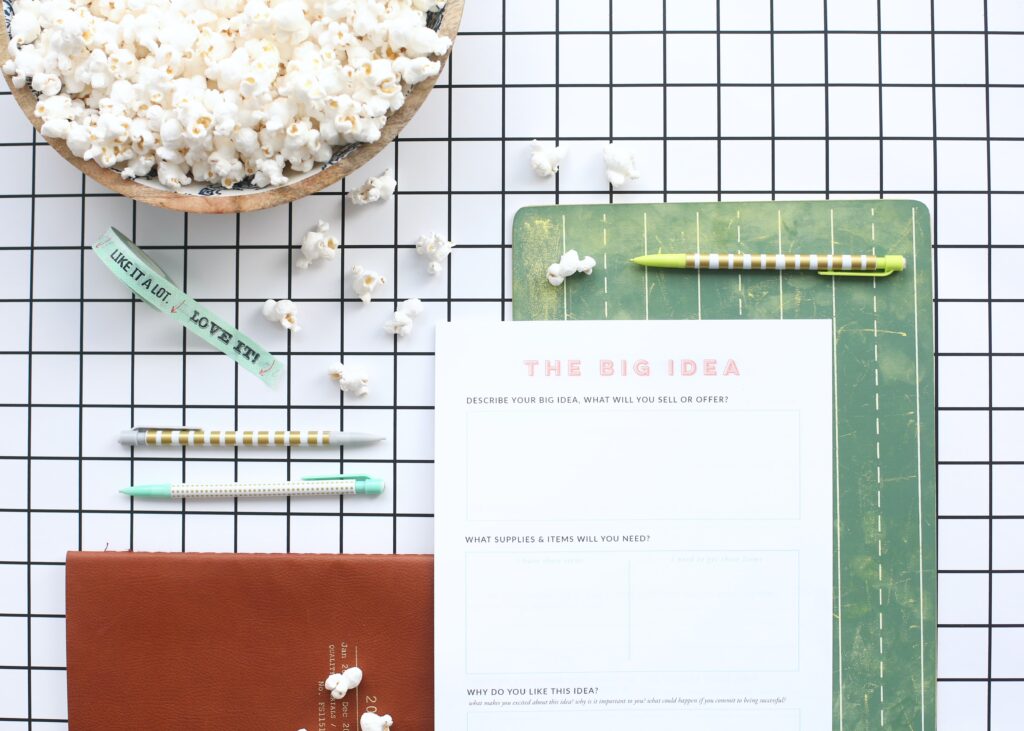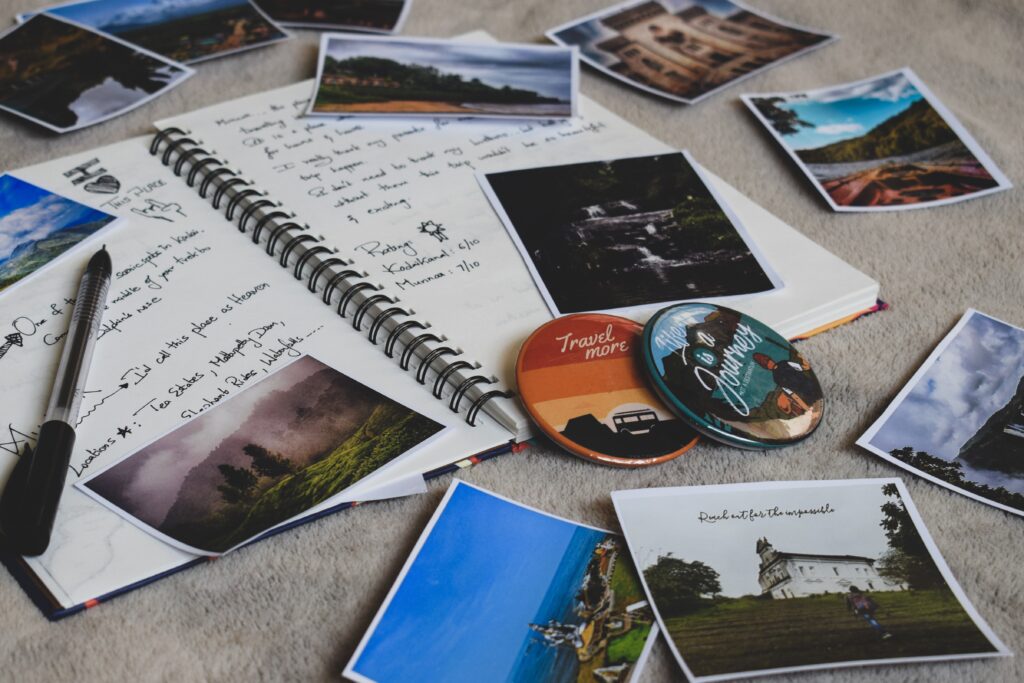Types of Journaling and How They Help You

Journaling is a method many people use to achieve goals, keep track of progress, vent, reduce stress, reduce anxiety, keep their thoughts organized, release pent-up emotions, improve memory and writing skills, etc.
It is one of the preferred methods used by psychologists, therapists, and counselors to help their patients sort out through their thoughts and emotions, and gain clarity over situations to solve and heal them.
Journaling can be used as a form of meditation. It is mostly used as a form of mindfulness and awareness exercise, as well as a growth exercise.
What most people think of journaling is writing prose in a diary. But, did you know there are different types of journaling? They each have their unique approach and benefits, although all types of journaling share general benefits.
This article is for entertainment and educational purposes only. If you need help or advice please contact a mental health professional.
Whether you already journal and want to know about other types of journaling, or if you have never journaled before but want to see what it’s all about, keeps reading to find out 9 different ways to journal.
1- Baseline Journaling
Have you ever logged or charted before? Baseline journaling is a type of journaling where you have logs instead of narrations of an event. Bullet journals and charts are an example of baseline journaling.
Dr. Dawn Elise Snipes licensed professional counselor and mental health service provider explains that the focus of baseline journaling is to keep track of the frequency, intensity, and duration of a behavior.
“For example”, said Dr. Snipes in her video about journaling techniques, “If you are trying to reduce how frequently you get extremely angry, then you may keep a log throughout the day and the week. And record how intense it was, on a scale of one to five, and how long you stayed angry”.
With these logs, the goal is to reduce the frequency, intensity, and duration of the experience. However, much like any other treatment or healing technique, you might see ups and downs in your progress.
This is completely normal as your mind needs time to unlearn the patterns that it used to protect itself and relearn the new patterns that will eventually lead to better outcomes.
“You’re probably going to see unequal progress in those”, said Dr. Snipes, “You may start reducing the intensity but you’re still getting angry as much as before. But that’s ok because that means you are moving in the right direction.”
One of the key benefits that baseline journaling provides, according to Dr. Snipes, is that we get to see the micro changes that we are making.
“It helps people keep motivated and helps you to see if something starts to go amiss”, explains Dr. Snipes, “We can look at the journal and if for some reason the behavior is starting to increase, we can take a step back and take a look to see what’s going on.”
2- Narrative Journaling

Have you ever written in a diary before? When you write everything about your day or describe a specific event that happened, this is narrative journaling.
“You can use narrative journaling to reflect on the day by writing about what happened”, said Dr. Dawn Elise Snipes a licensed mental health counselor, “You can use narrative journaling to reflect on a specific episode or incident to try to gain more awareness of your thoughts, feelings, and behaviors. And how these interact in that particular situation”.
With narrative journaling, you can step back and observe what has happened to analyze it without having your emotions get in the way. This is because, as you put down your thoughts and describe the events, your mind starts letting go of it and the emotions that this event evoked.
“When you are in distress, angry, anxious, depressed, a lot of the time you are thinking in your emotional mind and you are not easily able to access your cognitions”, explains Dr. Snipes, “In narrative journaling, you are describing what happened. You can use that information to participate to figure out what to do the same next time that happens and what you need to change to work towards your goals.”
Although many people use the first-person perspective when performing narrative journaling, you can also try writing from other points of view to get different perspectives and ideas.
“When you write thinking about how this person or that animal might have felt, thought, acted, etc, you gain an understanding of their point of view”, Dr. Snipes said, “You can also write from the perspective of your younger self or older self”.
“Our behaviors are based on prior learned behaviors”, Dr. Snipes continued, “When you tap into that eight-year-old you can figure out and realize the reason you reacted that way to that particular thing or event.”
3- Creative Journaling
Not everyone likes to write or can write due to various reasons. For those people, there are other options when it comes to journaling. Some of these options include graphic novels that can be created online, drawing, art with different media, voice recording, and video journaling.
“I had one person, that I worked with”, said Dr. Snipes in her video, “who would use charcoal when he was feeling depressed or angry. And when he was feeling more hopeful or optimistic, he tended to use pastels and other media that weren’t as bold”.
Creative journaling gives you the freedom to express your feelings in various ways without having the constraints of writing. It can also be more stimulating and interesting to those who find writing boring or who need visual effects.
Voice and video recording have the advantage that you can see and hear yourself fully. Not only in emotional and mental terms but also physical terms. Which makes things all the more real and may help with accepting things better than if you were only looking at it from an abstract perspective.
Looking at yourself through video recording can also help with physical self-acceptance and learning to love yourself as you are.
Another way you can creatively journal is by using images or pictorials.
“You can use faces, colors, and animals as well”, said Dr. Snipes, “Facesheets, for example, help children become more aware by pointing out who or what they feel like and then explaining why”.
4- Worksheets

Do you remember those worksheets you used to get in school where you had to answer questions in the given space? If you are someone who doesn’t like to write much, you can use worksheets to journal instead.
Worksheets have prompts and questions that help give you guidance and direction if you don’t know what to journal. It also gives you minimal space so your writing is succinct and to the point.
Some worksheets may have places for you to draw or paint as well, depending on what worksheet you get. Worksheets are also organized, so you don’t have to worry about organization or losing what you wanted to keep in sight.
5- Gratitude Journaling
Gratitude journaling can be done a few different ways but the most common one is to list 5 to 10 things that you are grateful for each day. It can be in the morning when you wake up or at night before bed.
According to an article on Healthline called The Benefits of Gratitude and How to Get Started, studies have shown that a gratitude practice can help you mentally, emotionally, and physically.
The article states that some of the benefits of gratitude are that it boosts your immune system by helping your body fight off illness and reducing risks associated with heart failure. It can improve mental health by easing symptoms of anxiety and depression by fostering positive feelings.
According to the article, doing a gratitude practice can also help foster and increase optimism in yourself, your present life, and the future.
6- Letter Journaling

Have you ever written an emotional letter to someone? Letter journaling is the act of writing a letter to a person with all that we wish to say to that person, all that we feel, but never actually sending it.
With the letter, we can write and let out all of our feelings, all that we had wanted to say but never could, in a safe way. Letter journaling helps us unload and release the feelings or thoughts that have been burdening us.
Because it is a letter you can send it to the person that you intended it to. Most people though, decide to either keep it, shred it, or burn it. The destruction of the letter symbolizes the ending of that burden or of that relationship, as well as the acceptance of that ending.
7- Dream Journaling
Have you ever experienced a vivid and strange dream? Some experts believe that our dreams are created by our brains to solve problems, explore interesting things, and as a warning of our mental health.
Dream Journaling, according to Masterclass, can help reveal dream patterns that might point out things happening in your daily life. Dream Journaling can also help us look into our behavior, improve physical health and strengthen the immune system.
According to an article on AllsWell, keeping a dream journal can help you work through unprocessed issues in your waking life and come to terms with them. It can also help you be more creative, help with recall of ideas, help solve problems by engaging the logical side of the brain and help you learn from mistakes.
8- Positivity Journaling
Positivity Journaling is similar to gratitude journaling in the sense that it fosters a positive attitude and eventual mindset with long-term practice. The difference is that with positivity journaling you write down good or positive things that happened to you or that you saw in your environment.
Doing this helps you become more aware of the positive things in life, instead of the negative ones that we are so used to seeing. This eventually helps boost morale and slowly develops a more positive way of thinking and outlook on life.
What type of journaling do you do? Which type of journaling would you like to try next or interest you the most? Let us know in the comments. Don’t forget to follow our YouTube channel for more interesting lists. Thank you for reading.

Sources:
AIICEUs Counseling Education. (2021). Journaling Techniques: NCMHCE & NCE Exam Review and Test Prep. YouTube. Retrieved from https://www.youtube.com/watch?v=Bv4PhXNegtg&t=603s.
Fulton, B. (2020, October 27). The benefits of gratitude and how to get started. Healthline. Retrieved from https://www.healthline.com/health/benefits-of-gratitude-practice.
Kaiser Permanente. (2020, March 5). 7 benefits to keeping a journal. NW Health Blog. Retrieved from https://wa-health.kaiserpermanente.org/seven-journal-writing-benefits/.
MasterClass Staff. (2021, September 8). How to keep A dream journal: 3 benefits of Dream Journaling – 2021. MasterClass. Retrieved from https://www.masterclass.com/articles/how-to-keep-a-dream-journal#quiz-0.
The Ground Floor. (2018, July 3). Night writer: How keeping A dream journal benefits your waking life. Allswell Home. Retrieved from https://allswellhome.com/blogs/news/benefits-of-dream-journals.



Responses